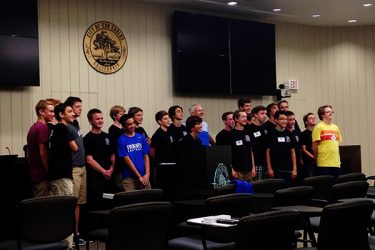This post was inspired by an editorial in the San Mateo Daily Journal, which focused on “social media addiction” enabled by the technology which wired the world. I encourage you to read it.
Every technology has its pluses and minuses. For the “good” ones the pluses outweigh the minuses. I think it’d be hard to argue the negatives of wiring the world outweigh the pluses…but that doesn’t mean there are no downsides to the drastically increased connectivity.
As a journalist1 I’m sure the editorial’s author appreciates that society has been through this before: when mass literacy appeared in the late 19th century, and the cost of publishing dropped enormously, newspapers and periodicals sprang up all over the place. They were a tremendous boon, and improved society immeasurably.
They also led to major problems, perhaps best epitomized by William Randolph Hearst purportedly starting the Spanish-American War with the way he covered the sinking of the USS Maine.
People had to learn that just because you see information printed in a nice font on paper it doesn’t necessarily bear any relationship to reality. For their part, it pressured the periodicals themselves to create standards of journalism, and publishing reputations, which, while not always followed, enabled readers to better assess how reliable a particular journal was. Society learned stuff published in the NY Times was more likely to be true or accurate than stuff published in the National Enquirer…even while we, collectively, kept reading both.
Today I think we’re struggling with learning to guard against our built-in paranoiac tendencies being triggered even more deeply and continuously. Those instincts are a critical survival tool in primitive conditions — don’t assume the nice, giant kitty wants to play with you because she probably just wants to eat you — but they pose a danger in complex societies. Because triggering them literally tears at the ties which define “community”. You can’t form or maintain a community when every individual fears his or her neighbors.
Fox News, and others, have made a fortune by learning how to press the paranoia button, repeatedly and surreptitiously, in a way which bypasses the mental processing involved with reading a journal and the safeguards we’ve developed as a society to deal with reported news and information. They use a tried & true formula: tell people what they fear may be true in a way that asserts it is true…even if the assertion is completely at odds with real world data. Your viewers will eat it up and incorporate it into their world view. Because it’s “confirming” something they already suspect.
That’s the far more dangerous addiction, IMHO, than social media per se. We all need to learn to assess the accuracy and provenance of information we consume via screens. Just because it’s well-organized and has fancy graphics and videos and is delivered by someone who looks nice doesn’t mean it’s accurate. At the very least we need to consider anything we “learn” from such sources as only potentially true, particularly if it confirms our pre-existing beliefs.
As I like to remind folks of my age group who complain about “all those kids with their noses buried in their phones”, those young people are likely more socially engaged than we ever were at their age. Social media technology has allowed them to expand their potential circle of contacts far beyond the folks you can physically run into.
Almost all humans like to interact with each other — we’re social primates, not tigers. That social impulse, admittedly coupled to bigger and more powerful brains, is why we’ve done much better as a species, on balance, than tigers.
It’s also why I think we’ll eventually conclude wiring the world was one of the best things we’ve ever done…after we learn to deal with its downsides.
The editorial’s author is editor-in-chief Jon Mays, a long-time journalist. ↩




























